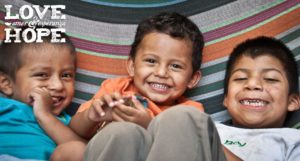Gang presence, violence, and even autonom y is something common throughout the majority of Central and South America. However, the issue is particularly profound in the small Central-American country of El Salvador. Home, to the notorious MS-13 gang (present all over the world now, even here in the United States), has practically run the country since the country’s civil war (1979-1992). As expected in a country run by gangs, the capitol city, San Salvador is notoriously known as the murder capitol of the world. A problem of this magnitude is certainly not solved over night, and my seem unsolvable all together, but, as it is so often said “you have to start somewhere”.
y is something common throughout the majority of Central and South America. However, the issue is particularly profound in the small Central-American country of El Salvador. Home, to the notorious MS-13 gang (present all over the world now, even here in the United States), has practically run the country since the country’s civil war (1979-1992). As expected in a country run by gangs, the capitol city, San Salvador is notoriously known as the murder capitol of the world. A problem of this magnitude is certainly not solved over night, and my seem unsolvable all together, but, as it is so often said “you have to start somewhere”.
Rachel Sanson was born in Cleveland, Ohio to a christian family, where she attended Christian school. In her teenage years, she made her first trip to El Salvador working at a state run children’s home called “Shalom Children’s Home”. Here she saw an overpopulated and understaffed home which barely provided for its residence until their 18th birthday, when they were thrust into the real world. Seeing this kind of need, Sanson felt a call to start a children’s home in El Salvador herself. On another trip, while working in the community of Nejapa, she started her children’s home. In October of 2003, Love and Hope Children’s home officially opened it’s doors. Since its opening, it has moved twice, once to Los Planes de Renderos (outside of San Salvador), and finally to the capitol itself.
What makes the home so unique is its thoroughness. Instead of trying to provide the bare minimum for hundreds of children, they fully support a more segmented number of children. In providing shelter, safety, food, and education to the children, Love and Hope Children’s home provides the children with opportunists to do more than simply join the gang when they reach the age of 18, thus furthering the problem. Many of the children who have gone through the home have even had the opportunity go to university after leaving the home, giving them a job that they can use to provide for themselves, their eventual spouses, and one day kids, thus breaking the gang cycle. Currently the home hosts 20 children of all ages, and resembles more of a family than an orphanage. The children celebrate Christmas, have picnics, and have game nights. It doesn’t just keep the children alive, but really helps them thrive. Obviously, there is more work to be done. There are more than twenty children in the country of El Salvador. However, this model provides the clearest path to breaking the cycle that has plagued the poor country for years. This is simply the first step, the beta-test of the next step forward, if you will. More information about Love and Hope Children’s Home can be found at this link.

Wow! This is so heartwarming and inspiring– a wonderful example of a great entrepreneurial mind being used to create social impact to benefit those in need. Sanson’s model of making sure a smaller group of children is fully supported as opposed to a few children is awesome– it shows a different and more methodical approach to service not often seen in social impact movements like Sanson’s. This is an awesome organization, thanks for reporting!
As someone who has gone to Latin American and seen first hand some of the horrible things being done, I think this is awesome. A true problem does exist as children leave the homes.
Sometimes I think that people forget how dire the situation is in Central and South America. And with Latin Americans representing an increasing percentage of the population, ministry in countries like El Salvador is sorely needed. Good to see someone shining light into a dark place